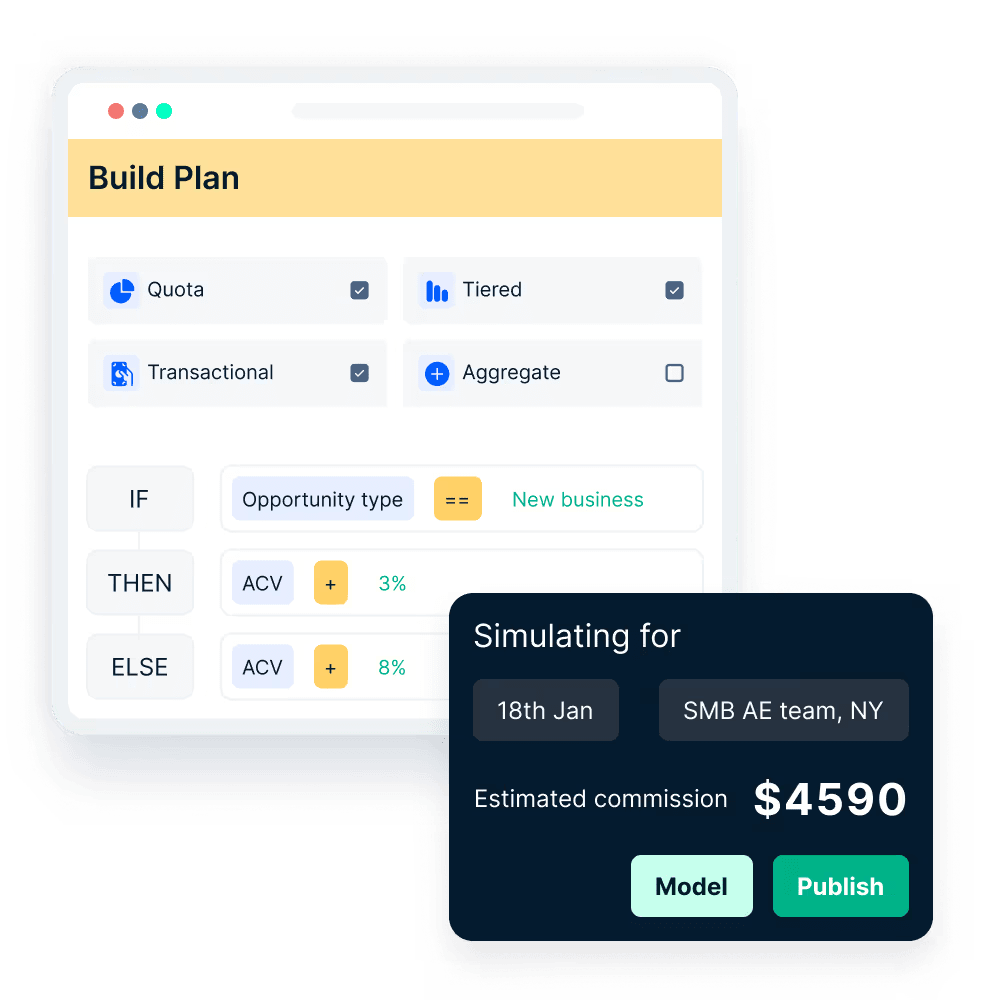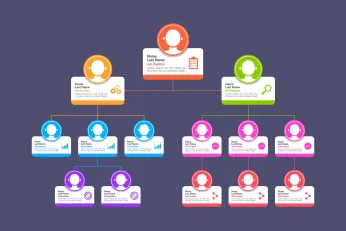Gestión de cuotas de representantes de ventas: Cómo fijar, controlar y alcanzar sus objetivos
¿Le cuesta cumplir sus cuotas de ventas? Esta guía desglosa las estrategias esenciales de gestión de cuotas de los representantes de ventas, desde la priorización de clientes potenciales hasta el seguimiento, para ayudarle a mantener el rumbo y cerrar más acuerdos.
En esta página
A well-structured sales rep quota keeps sales teams focused and ensures consistent performance. Without clear quotas, tracking progress and identifying areas for improvement becomes difficult. Setting achievable targets helps businesses drive revenue and maintain sales momentum.
Effective sales rep quota management prevents unrealistic expectations and keeps motivation high. Instead of overwhelming sales teams, properly designed quotas provide direction and encourage steady growth. Businesses that implement strategic quotas see better alignment between effort and results.
In this blog, we will explore the fundamentals of sales rep quota management, providing insights on setting the right quotas to enhance sales performance.
What is the sales rep quota?
A sales quota is the performance expectation that sellers must achieve during a set period to earn their target incentive pay (Source: Gartner). Quotas are also called goals or targets and can increase seller motivation when opportunity varies by territory.
So, in an applicable manner, a salesperson in a software company may be given a quarterly sales quota of $150,000. This means the salesperson is expected to generate $150,000 in sales within three months.
To achieve this quota, the salesperson may focus on selling the company's software solutions to various businesses. They will track their progress regularly and adjust their strategies as needed. If they meet or exceed the quota, they may receive bonuses or other incentives as a reward.
If they fall short, they may need to analyze their performance and find ways to improve for the next period. If set well, the sales quota benefits the representatives with:
- A clear set of goals that motivate sales representatives to achieve their targets.
- Measurement of the performance of individual sales representatives.
- Creating accountability by setting clear expectations for sales performance.
- Incentives and bonuses are tied to quotas so that sales reps perform better.
However, the sales rep quota is very different from the sales target.
Sales quota vs. sales target: Understanding the differences
Sales quotas and sales targets both play crucial roles in driving sales performance, but they serve different purposes. A sales quota is a mandatory goal assigned to a salesperson or team, while a sales target is a broader objective that businesses set to encourage growth. Understanding these distinctions helps companies set clear, strategic goals that drive both individual and organizational success.
Let us go through the key differences between sales quota and sales target
While sales quotas ensure that sales teams meet minimum performance expectations, sales targets serve as motivational benchmarks to push for greater success. A well-balanced sales strategy incorporates both—quotas to maintain accountability and targets to drive long-term growth.
Different types of sales quotas with applicable examples
Sales quotas are essential benchmarks for measuring sales performance, and they can be categorized into several types:
1. Volume sales quota
The quota is determined by the number of units a salesperson can sell within a specified period. Sales representatives receive their commission when they achieve the expected number of deals. The volume sales quota can also be divided for individual sales representatives based on territories and different products.
💡 Example: A car salesperson must sell at least fifteen cars this quarter. His commission per car sold is 8%, and he receives an additional $15,000 if he meets his quota. For an average car value of $50,000, the salesperson will earn $75,000 ((15 cars * 50,000 * 8%) + 15,000) in commission.
2. Revenue quota
The revenue quota model refers to meeting the quota when the salesperson hits a particular quarterly revenue benchmark. The revenue quota works for product-type businesses where the sales cycle is standard, and the product price is fixed.
However, it prevents salespersons from offering a better price or a discount while closing. And this may lead to missed opportunities. This quota works well for service and subscription types of businesses.
💡 Example: A salesperson who has generated an MRR of $20,000 cracks two deals with an MRR of $5,000 and $4,500, respectively. Which brings up his total to $29,500 ($20,000 + $5,000 + $4,500). If the MRR quota for this salesperson was $25,000, these two deals would have helped him exceed it, and he would have received the commission for it.
3. Activity quota
The activity quota standardizes the sales process and reduces the length of the sales cycle. This model is also effective for training new sales employees and maintaining CRM hygiene.
It helps track the progress of SDRs and BDRs as they support sales representatives by making calls and leading initial demonstration sessions. Before implementing this quota, you must have a sales management tool like Compass to track and review all the activities.
💡 Example: A salesperson sends 100 emails and makes 300 calls in a month. They also update lead details in the CRM, follow up with contacts, and reach out to 30 people on social media monthly to meet their activity quota.
4. Profit quota
The profit quota plan is like the revenue quota in terms of setting goals in an advanced manner. The profit quota tracks and reports the profit benchmark that each salesperson must meet.
To calculate the gross profit quota, subtract the cost to sell and other expenses (such as showroom rent, telephone usage, advertising costs, and discounts offered) and the cost of goods from the revenue. This approach helps improve budgeting and overall profitability. Gross profits better represent the business's growth trajectory.
💡 Example: For a deal worth $15,000, where the cost of goods is $5,000, and the overall selling expense is $3,000, the gross profit will be $7,000 ($15,000: ($5,000 + $3,000)). A salesperson must make three such deals to reach a monthly quota of $21,000.
Now that we know the different types of sales rep quota, let us know how you can set the quota in four steps.
How to set sales quotas: The top-down vs. bottom-up approaches
Setting a sales rep quota is a critical process that directly impacts performance, motivation, and revenue growth. The method used to establish quotas must balance business objectives with individual capabilities to ensure targets are both challenging and achievable.
Two primary approaches are commonly used: top-down and bottom-up. Each has its advantages and challenges, and selecting the right approach depends on the company’s structure and goals.
Top-down approach
In the top-down approach, leadership sets sales quotas based on overall business revenue targets. The company first determines how much revenue it needs to generate within a given period, then divides this number among sales teams and individual reps. This method often relies on historical sales data, market trends, and company growth projections to establish quotas.
How it works:
- The company sets an overall revenue goal.
- This goal is broken down by region, team, and individual sales reps.
- Quotas are distributed based on factors such as past performance and market size.
✅ Advantages:
- Ensures quotas align with overall business revenue goals.
- Creates a structured and scalable approach to quota setting.
- Provides consistency across teams and regions.
⚠️ Challenges:
- May not reflect individual rep performance or market conditions.
- Can feel unrealistic if set without sales team input.
- High quotas based on leadership projections can demotivate reps if unattainable.
Bottom-up approach
The bottom-up approach takes a more data-driven and employee-centric route. Instead of setting quotas based on overall revenue targets, this method considers individual sales rep performance, market conditions, and realistic sales potential. Sales teams and managers provide input on achievable quotas based on past performance and expected opportunities.
How it works:
- Individual sales reps and managers assess past performance and market potential.
- Teams set achievable sales goals based on real-world conditions.
- These figures are consolidated to establish company-wide quotas.
✅ Advantages:
- Quotas feel more realistic and attainable for reps.
- Encourages buy-in from sales teams, boosting motivation.
- Reduces the risk of setting overly ambitious, unachievable targets.
⚠️ Challenges:
- May result in conservative quotas that limit company growth.
- Can be difficult to align with overall business revenue targets.
- Requires detailed input and collaboration, making it more time-consuming.
Which approach works best?
Both methods have their merits, and many businesses find success by combining them in a hybrid approach. This strategy ensures quotas align with company revenue goals while considering real-world sales potential.
Best practices for a balanced approach:
✔ Use top-down for setting broad revenue goals while allowing flexibility for teams.
✔ Incorporate bottom-up insights to ensure quotas are realistic and motivational.
✔ Regularly review and adjust quotas based on performance and market changes.
Effective sales rep quota management requires a balance between business expectations and sales team capabilities. By choosing the right approach, companies can drive sustainable growth while keeping sales teams motivated and focused.
How to hit sales Quotas: Tips for sales reps
Meeting a sales rep quota is about strategy, consistency, and adaptability. Rather than relying on last-minute efforts, successful sales reps build daily habits that drive predictable results. Below are practical and actionable strategies to help you consistently meet or exceed your quotas.
1. Prioritize high-value leads
Not all leads are worth the same effort. Focusing on the right prospects can significantly improve your conversion rate and help you close deals faster. To identify high-value leads, use lead qualification frameworks like BANT (Budget, Authority, Need, Timeline) or CHAMP (Challenges, Authority, Money, Prioritization).
- Analyze past data to identify common characteristics of your most profitable customers.
- Use CRM tools to track and segment leads based on their likelihood to convert.
- Engage decision-makers early to ensure you’re speaking with those who have purchasing power.
By directing your time and resources toward leads that fit your ideal customer profile, you avoid wasting energy on unqualified prospects and increase your chances of closing deals faster.
2. Master sales rep quota management
Breaking down your quota into manageable milestones prevents last-minute pressure and allows for better tracking. If your monthly quota is 20 deals, divide that into weekly or even daily targets to stay on pace.
- Set clear daily and weekly activity goals, such as making a certain number of calls, sending follow-up emails, or scheduling demos.
- Use a sales performance dashboard to monitor your progress in real time.
- Adjust your strategy if you notice you’re falling behind, rather than scrambling at the end of the month.
A structured sales rep quota management approach keeps you accountable, prevents burnout, and ensures that you stay on track toward hitting your goals.
3. Improve your sales pitch
Your pitch can determine whether a prospect engages or walks away. Instead of using a one-size-fits-all approach, customize your pitch based on the prospect’s industry, challenges, and goals. Research your prospect thoroughly before reaching out to understand their pain points.
- Start by highlighting a specific challenge your prospect is likely facing.
- Use storytelling to make your pitch more relatable and engaging.
- Have a strong value proposition that clearly differentiates your product or service from competitors.
Handling objections effectively is also part of a strong pitch. Anticipate common pushbacks, such as budget concerns or hesitation to switch vendors, and prepare persuasive responses that focus on long-term value rather than price.
4. Leverage sales technology
Sales automation tools can significantly improve efficiency by streamlining repetitive tasks and ensuring that no leads fall through the cracks. A well-integrated CRM system allows you to track interactions, schedule follow-ups, and access real-time sales insights.
- Automate email follow-ups to keep prospects engaged without spending hours on manual outreach.
- Use AI-driven analytics to identify the best times to contact leads and which messaging resonates most.
- Track pipeline health to identify potential bottlenecks early.
Sales performance management software, like Compass, provides real-time tracking of quotas and commissions, helping you stay motivated and focused on your goals.
5. Increase follow-ups
Many sales reps lose deals simply because they don’t follow up enough. Research shows that 80% of sales require at least five follow-ups, yet most reps stop after one or two. Consistent and well-timed follow-ups keep you on the prospect’s radar and increase the likelihood of closing the deal.
- Space out follow-ups strategically rather than bombarding the prospect with daily messages.
- Use multiple communication channels, including email, phone, and LinkedIn, to stay top of mind.
- Provide additional value in each follow-up instead of just asking for an update. Share relevant case studies, industry insights, or product benefits.
A strong follow-up strategy ensures that you don’t lose potential customers simply because they weren’t ready to buy immediately.
Hitting a sales rep quota consistently requires more than just working harder—it’s about working smarter. By prioritizing the right leads, managing quotas effectively, refining your pitch, leveraging technology, and maintaining a structured follow-up process, you set yourself up for long-term sales success.
Achieve 100% quota attainment with Compass
Setting the right sales quotas is crucial for driving performance, but misaligned targets can demotivate teams and hinder growth. Compass ensures accurate, transparent, and adaptable quota management, helping businesses align targets with revenue goals while maximizing attainment.

How Compass enhances sales quota management:
- ✅ Data-driven quota planning: Design transparent and achievable quotas using AI-powered forecasting, ensuring they align with business objectives and revenue targets.
- ✅ Flexible quota adjustments: Modify quotas anytime during the plan period to adapt to changing market conditions and business strategies, keeping goals realistic and attainable.
- ✅ Top-down & bottom-up allocation: Optimize quota distribution by balancing leadership-driven targets with sales team insights, increasing alignment and improving overall quota attainment.
- ✅ Real-time performance insights: Track progress instantly through interactive dashboards and leaderboards, enabling sales teams to stay motivated and focused on their goals.
With Compass, businesses eliminate guesswork, ensure fair quota assignments, and empower sales teams to consistently hit their targets.
Try Compass today to create dynamic, data-backed quotas that maximize sales performance and revenue growth. 🚀
Conclusión
By setting sales quotas, companies can better predict their revenue streams. This helps in financial planning, budgeting, and resource allocation. Moreover, sales rep quotas can create a sense of accountability among salespeople. When targets are clear, it’s easier to track individual contributions to the company’s overall success, which can be tied to compensation and recognition.
So, schedule a demo call with the experts from Compass to offer a benchmark against which sales performance can be measured. Identify high performers, those who need additional support or training, and overall team effectiveness.














